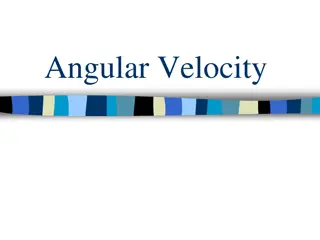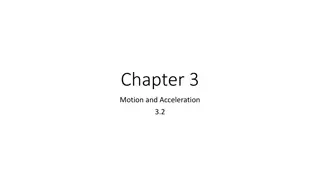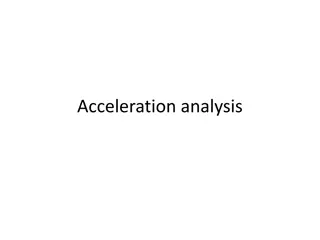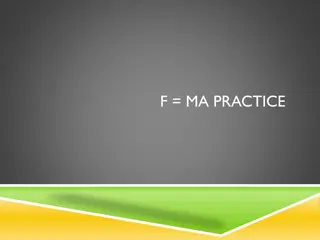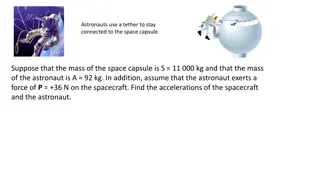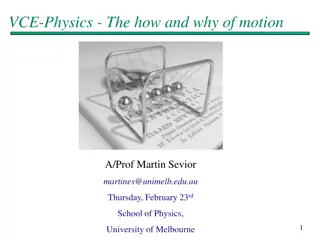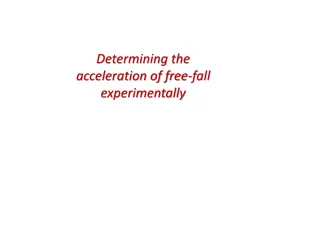Understanding Acceleration in Physics
Explore the concept of acceleration through real-world scenarios involving moving objects and graphs. Learn how to determine the direction of acceleration based on the velocity changes of cars, divers, bungee jumpers, and more. Delve into examples of calculating average acceleration and final velocity in different scenarios. Understand the kinematic equations and how they apply to situations with constant acceleration. Discover how to find average velocity in cases of uniform acceleration.
Uploaded on Sep 14, 2024 | 0 Views
Download Presentation

Please find below an Image/Link to download the presentation.
The content on the website is provided AS IS for your information and personal use only. It may not be sold, licensed, or shared on other websites without obtaining consent from the author. Download presentation by click this link. If you encounter any issues during the download, it is possible that the publisher has removed the file from their server.
E N D
Presentation Transcript
Acceleration Graphs and Problems
For each sentence determine the direction of acceleration. a. A car is moving eastward along Lake Avenue and increasing its speed from 25 mph to 45 mph. b. A northbound car skids to a stop to avoid a reckless driver. As a general rule if object is increasing speed acceleration is in the same direction as motion if object is slowing down acceleration is in the opposite direction c. An Olympic diver slows down after splashing into the water. d. A southward-bound free kick delivered by the opposing team is slowed down and stopped by the goalie. e. A downward falling parachutist pulls the chord and rapidly slows down. f. A rightward-moving Hot Wheels car slows to a stop. g. A falling bungee-jumper slows down as she nears the concrete sidewalk below
Representing acceleration graphically Describe the motion indicated by the graphs.
Examples - calculating Acceleration The velocity of the aircraft is reduced from 100 m/s[S] to 40 m/s[S] in 8 s. Find it s average acceleration.
example 2 A truck is moving east at a speed of 20 m/s. The driver presses on the gas pedal and truck accelerates at the rate of 1.5 m/s2[E] for 7 seconds. What is the final velocity of the truck?
example 3 A truck is moving east at a speed of 30 m/s. The driver presses on the brake pedal and truck accelerates at the rate of 4.5 m/s2[W] for 5 seconds. What is the final velocity of the truck?
Kinematic Equations - found in Motion text section 2.5 1. , always true 2. , always true 3. , constant acceleration only 4. , constant acceleration only d d 5. , constant acceleration only 6. , constant acceleration only
example 4- finding average velocity A motorcycle accelerates uniformly from +40 ft/s to +120 ft/s in 7 seconds. Find the average velocity use vavg- (vi+ vf). this only works if acceleration is constant and uniform.
example 5 A car is moving at +25 m/s. It then accelerates at a rate of 1.5 m/s2for 10 s. Find it s final velocity.
example 6 A sports car accelerates from +20 m/s to +50 m/s while covering a distance of + 2km. Find it s acceleration.
example 7 A jet accelerates from a velocity of +50 m/s to a velocity displacement of +1200 meters. How long did it take to reach this velocity? of +120 m/s while having a



